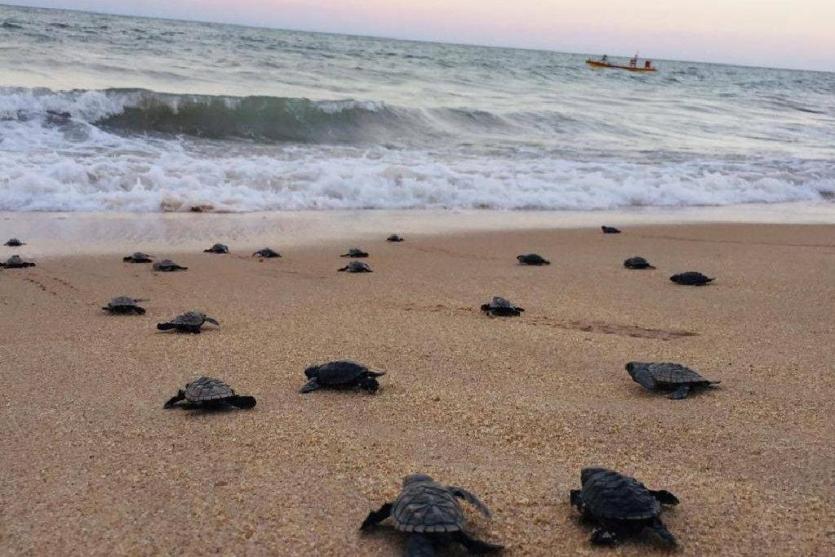A hawksbill sea turtle hatchling crawls toward the ocean on Janga Beach in Paulista, Brazil, on March 22, 2020. Photo:Paulista City Hall
Endangered Turtles Making a Comeback on account of Pandemic
By Patryk Krych | The World Daily APRIL 4th 2020
With the COVID-19 pandemic causing global economic collapse and shutdowns of various social gathering hotspots, there have been signs the nationwide quarantines having numerous effects on wildlife. Most recently, as has been discovered, on the nesting season of turtles.
The Leatherback turtle faces many human-wrought dangers in its daily quest for survival, from fishing nets, the plastic pollution in the world’s oceans, as well as the threat of compromised nesting sites. Conservation groups predict that with things as they are, it’s likely that the species is bound to die off by 60 years time.
However, with recent coronavirus lockdown measures taking effect many of the world’s beaches have come to be empty and void of human visitation. This has proven to be a saving grace for many species of turtle, who have just approached their mating season. Leatherbacks, Loggerheads, and the far more critically endangered Hawksbill turtle nest hatchlings have all been witnessed on typically human-populated beaches these past weeks, The Guardian reported.
According to a city news release, the moment of a Hawksbill turtle mass hatching in particular was photographed by government workers on a beach in Brazil. The beach -typically heavily populated with vacationing tourists and sunbathers- was empty, with the exception of the government workers, who were present to record the event.

Nearly 100 endangered sea turtles have hatched on a Brazilian beach left deserted due to people staying in and self-isolating. Photo:Paulista City Hall
Meanwhile in India, in the marine sanctuary in the country's eastern state of Orissa - 407,194 turtles were recorded having laid their eggs between March 14 and 21, in 2020. This is a much higher number than what was recorded in 2016, with only up to 150,000 turtles having arrived to nest and lay their eggs.
On Thursday, Bette Zirkelbach, who manages the Sea Turtle Hospital in Marathon, Florida, told weather.com that "The hazards to sea turtles during nesting season, a lot of it is human impact. It does not take long for nature to take back, and with having less human population, it's definitely going to affect it."
The human impact left upon beaches can heavily influence the success rate of the turtle hatchlings’ survival. Plastic waste, chairs, holes dug in the sand, can all serve as obstacles – to both the hatchlings and the mothers. Bright lights from the nearby cities have also been known to daze and confuse the newborn hatchlings, prompting them to wander towards the city rather than towards the ocean.
Fauna & Flora International (FFI), a conservational scientists organisation, predicated that for the Leatherback species of turtle in particular, we have only ten years left to enforce measures that would protect them. Otherwise, their already declining population may be past saving after such a point.
"If this particular population goes they're completely irreplaceable, because they're unique to this particular part of the oceans," said Alison Gunn, programme manager for the Americas and the Caribbean at FFI. "There's a lot of conservation action happening right now. We need to increase the collaboration that's already happening in order to ensure that this population is not lost."
Over the course of the last three generations of turtle, there has been a decline of at least 90% in the population of female nesting turtles recorded.
"We have it within our power to protect these animals and enable them to thrive, but all those who have a hand in shaping their future need to work together to do so," Gunn added.
By Patryk Krych | © The World Daily 2020






